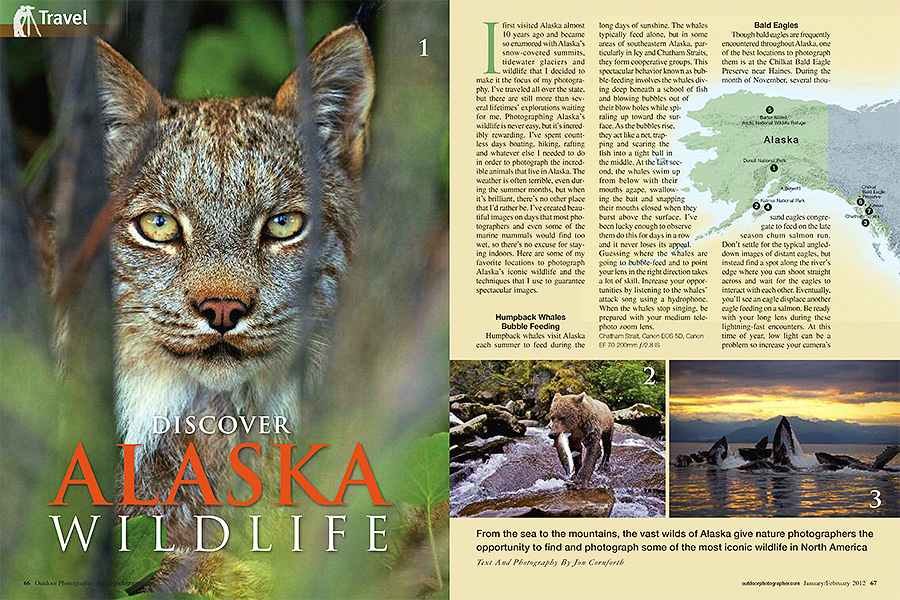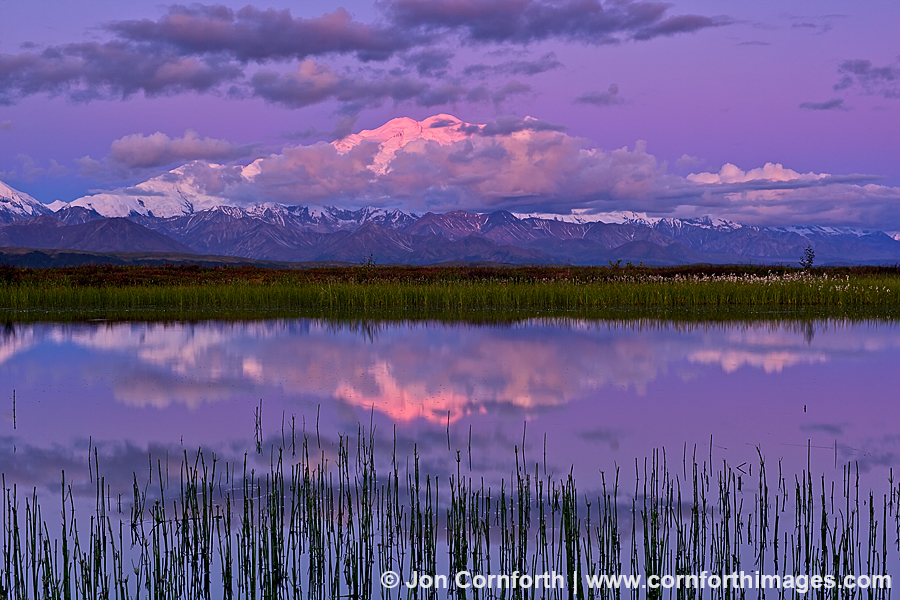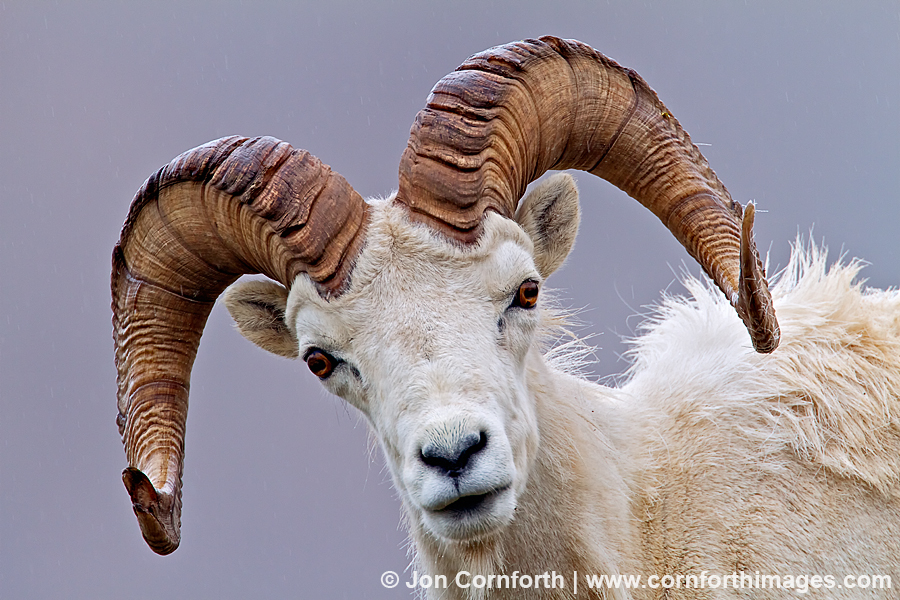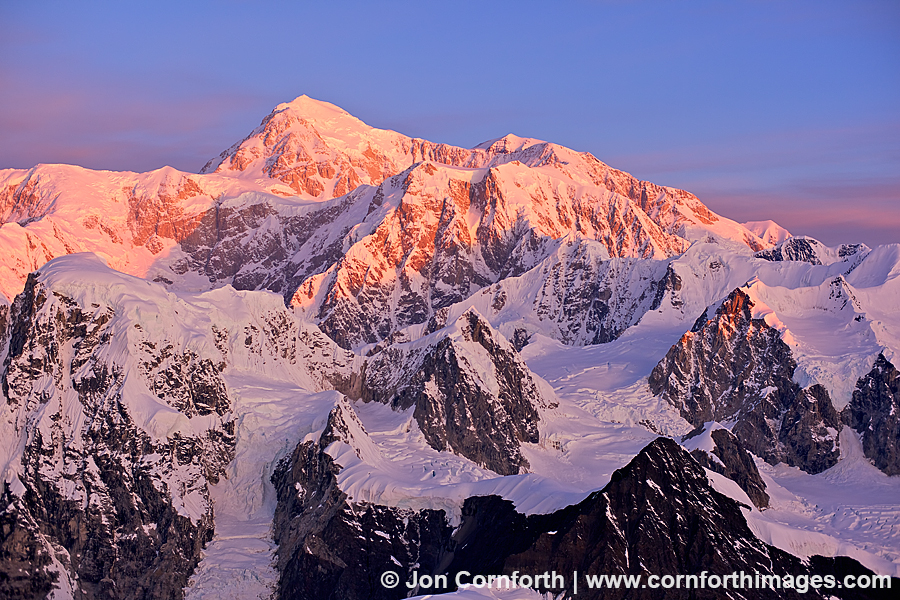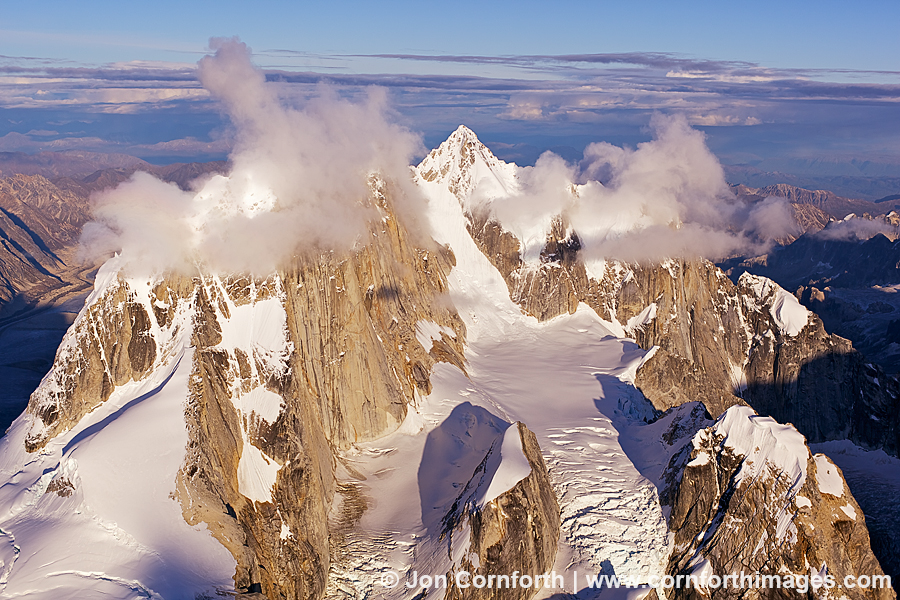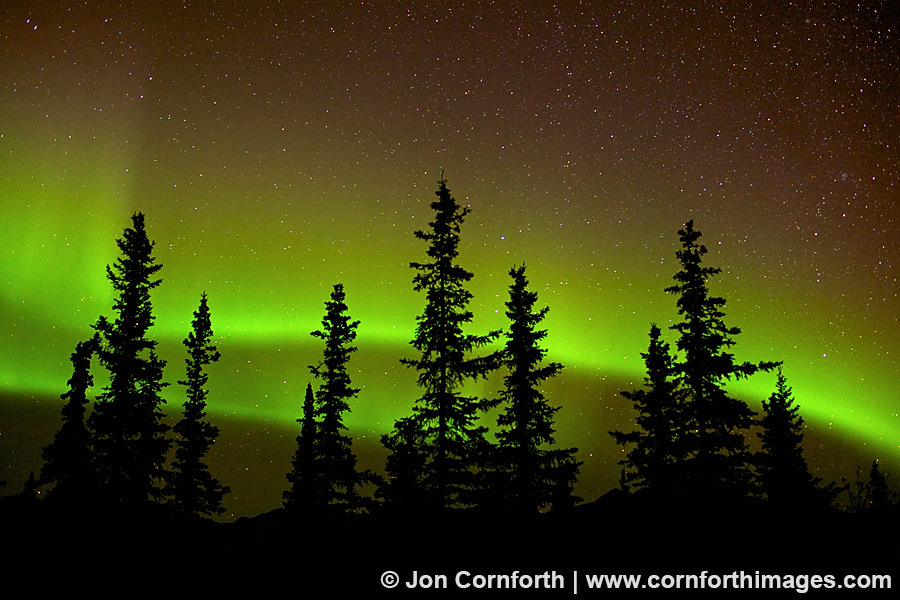
Denali Sunset Virga Reflection
Posted onI’m kind of looking forward to heading back to Alaska next week. I say kind of because of the terrible June weather we have had here in the Pacific Northwest. I’m sure that it will be quite similar during most of July in Alaska which is kind of depressing. Oh, well. That is the price to pay for beautiful images in the 49th state. As I have recently finished editing my backlog of photos, I rediscovered this spectacular sunset image from my visit to Denali National Park last July. I had a professional photographer’s permit which allowed me to drive the Wonder Lake Road in my own vehicle for 9 days. It was an amazing experience that allowed me to create some fantastic wildlife and landscape images. The beautiful sunset light illuminating the virga in the distance caught me by surprise. I quickly jumped out of the van and ran down to this tundra pond next to the side of the road. It’s moments like this that I need to be confident in my abilities to set up my camera very quickly and efficiently.

